Keynote Speeches
-
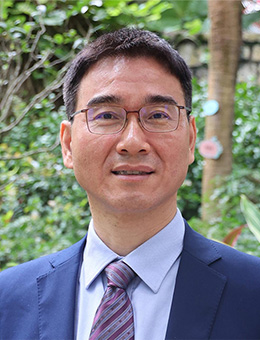
Title: Empowering Electromagnetics in Healthcare: Advancements in MMIC, Wireless Power Transfer, Antenna Technology, and Wireless Sensing
Speaker: Prof. Yongxin Guo
Affiliation: City University of Hong KongAbstract:
Electromagnetics in healthcare has played a crucial role in early diagnosis, long-term monitoring and medical treatment. Numerous applications in medical diagnostics and therapeutics ranging from cardiac pacemakers to emerging devices in visual prosthesis, brain computer interfaces and body area networks have spurred electronic engineers to propose new wireless medical devices. Wireless implantable medical devices (IMDs) provide an opportunity to improve the patient health monitoring and treatment. To extend the lifespan without incorporating a bulky battery and to facilitate the miniaturization of IMDs, the wireless power transfer (WPT) technology and antenna miniaturization and multifunction have played an essential role. On the other hand, smart wireless sensing and modulation have increasingly been adopted in medical applications for monitoring, detecting, tracking and treatment of medical condition developments. In this presentation, advancements in MMIC, WPT, antenna technology and wireless sensing for biomedical applications will be presented.
Biography:
Dr Yongxin Guo is currently a Chair Professor of Electronic Engineering under the Global STEM Professorship Scheme at the Department of Electrical Engineering, City University of Hong Kong. Dr Guo was a Professor at the Department of Electrical and Computer Engineering, National University of Singapore (NUS). He has authored or co-authored over 600 international journal and conference papers, 2 books and 4 book chapters. He holds over 60 granted/filed patents in USA, China and Singapore. His current research interests include RF sensing, antennas and electromagnetics in medicine; wireless power for biomedical applications and internet of things; wideband and small antennas for wireless communications; and RF and microwave circuits and MMIC modelling and design. He has graduated 24 PhD students and hosted and supervised more than 110 research staff, visiting PhD students, and visiting scholars at NUS.
Dr. Guo is a Fellow of IEEE and Singapore Academy of Engineering. He is serving as Editor-in-Chief, IEEE Journal of Electromagnetics, RF and Microwave in Medicine and Biology for the term of 2020-2025. He is a Distinguished Lecturer for IEEE Antennas and Propagation Society (2022-2024). He received the CityU HK 1st EE Outstanding Alumni Award in 2022. He was the recipient of 2020 IEEE Microwave and Wireless Components Letters Tatsuo Itoh Prize of the IEEE Microwave Theory and Techniques Society. He is serving as IEEE Biomedical Engineering Award Committee and served as the IEEE Fellow Evaluation Committee for IEEE Engineering in Medicine and Biology Society (2019-2020). Dr Guo was the Chair for IEEE AP-S Technical Committee on Antenna Measurement in 2018-2020. He has served as General Chair/Co-Chair for a number of international conferences/workshops. Open> -
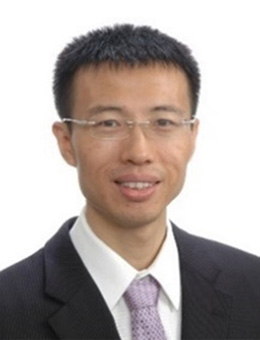
Title: Physics-Assisted Machine Learning for Wave Sensing and Imaging
Speaker: Prof. Xudong CHEN
Affiliation: National University of Singapore, SingaporeAbstract:
In recent years, the use of machine learning (ML) to address wave imaging and sensing problems has garnered significant interest from researchers. However, most existing work in this field tends to adopt ML as a black box. In fact, researchers have accumulated substantial domain knowledge on wave physics over several decades, and some of these physical laws exhibit well-known mathematical properties, even analytical formulas, that do not require extensive data training. This talk emphasizes the importance of deeply understanding the corresponding forward problem when researching imaging and sensing problems, which are inherently inverse problems. Insights and intuitions, whether mathematical, physical, or engineering, can potentially aid in solving these problems more efficiently and elegantly. The presentation will cover several imaging scenarios, including microwave imaging, near-range mm-wave MIMO imaging, and scanning microwave impedance tomography. We will demonstrate how combining ML with existing knowledge of underlying wave physics can enhance image reconstruction in various contexts. Furthermore, this talk proposes a high-accuracy and efficient ML-based classification method for frequency-modulated continuous-wave (FMCW) radar. Instead of directly using measured data as input for the neural network, we start from the fundamental principles of wave physics to design a low-dimensional input. This classifier is applied to an automotive radar system, where road targets are categorized into five types. The proposed physics-assisted classifier is tested with real-world data from 77-GHz FMCW radars and proves to be competitive among state-of-the-art methods in automotive radar applications. Finally, the talk will summarize the experiences gained from solving various wave sensing and imaging problems.
Biography:
Prof. Chen received the B.S. and M.S. degrees from Zhejiang University, China, and the Ph.D. degree from the Massachusetts Institute of Technology, USA. Since 2005, he has been with the National University of Singapore, Singapore, where he is currently a Professor. He has published 180 journal papers on inverse scattering problems, material parameter retrieval, microscopy, optical encryption, and physics-assisted machine learning. He has authored the book Computational Methods for Electromagnetic Inverse Scattering (Wiley-IEEE, 2018), which has been adopted as a textbook by many undergraduate- and graduate-level courses worldwide. His research interests include mainly electromagnetic wave theories and applications, with a focus on inverse problems and computational imaging. Dr. Chen is a Fellow of IEEE and Fellow of the Electromagnetics Academy. He was a recipient of the Young Scientist Award by the Union Radio Scientifique Internationale in 2010. He is currently a Deputy Editor-in-Chief (D-EiC) of IEEE Transactions on Geoscience and Remote Sensing (IEEE T-GRS), and he was an Associate Editor (AE) of IEEE Transactions on Microwave Theory and Techniques, IEEE T-GRS, and IEEE Journal of Electromagnetics, RF and Microwave in Medicine and Biology. He has been members of organizing committees of more than 10 conferences, serving as General Chair, Technical Program Committee (TPC) Chair, Award Committee Chair, etc. He was the Chair of IEEE Singapore Microwave Theory and Techniques (MTT)/Antennas and Propagation (AP) Joint Chapter in 2018. Open> -
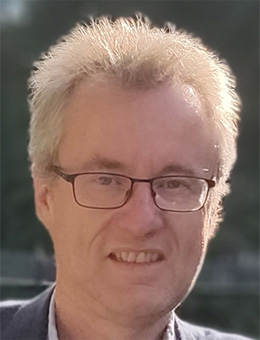
Title: Recent imaging technologies towards a more realistic and immersive user experience
Speaker: Frederic Dufaux
Affiliation: CNRSAbstract:
Nowadays, thanks to rapid technological progresses over the last decades, digital images and video sequences are ubiquitous, with many remarkable and successful applications and services. A key driver to research and development activities has been the objective to provide an ever-improving visual quality and user experience.
In this context, one of the next frontiers is to be able to faithfully represent the physical world and to deliver a perceptually hyperrealist and immersive visual experience. On the one hand, the human visual system is able to perceive a wide range of colors, luminous intensities, and depth, as present in a real scene. However, current traditional imaging technologies cannot capture nor reproduce such a rich visual information. On the other hand, immersive applications aim at giving to the user the sense of being present and immersed in one location or environment, without being physically there.
Recent research innovations have made it possible to address current bottlenecks in multimedia systems. As a result, new multimedia signal processing areas have emerged such as ultra-high definition, high dynamic range imaging, light fields, and point clouds. These technologies have the potential to bring a leap forward for upcoming multimedia systems. However, the effective deployment of hyper-realistic video technologies entails many technical and scientific challenges.
In this talk, I will discuss a few recent research activities related to hyper-realistic and immersive imaging. I will first consider point clouds, a very promising type of representation. One major distinguishing feature of point clouds is that, unlike images, they do not have a regular structure. Moreover, they can also be very sparse. For these reasons, point cloud processing presents significant challenges. Here, I will present recent learning-based approaches for point cloud compression and quality assessment. In a second phase, I will discuss high dynamic range imaging and in particular tone mapping operators (TMO). TMOs are used to compress the dynamic range with the aim of preserving the perceptual cues of the scene. Here, I will show how we can leverage semantic information as well as contextual cues from the scene to drive a TMO in a way similar to how expert photographers retouch images.
Biography:
Frederic Dufaux is a CNRS Research Director at Université Paris-Saclay, CNRS, CentraleSupélec, Laboratoire des Signaux et Systèmes (L2S, UMR 8506), where he is head of the Telecom and Networking research hub. He received his M.Sc. in physics and Ph.D. in electrical engineering from EPFL in 1990 and 1994 respectively.
Frederic is a Fellow of IEEE. He was Vice General Chair of ICIP 2014, General Chair of MMSP 2018, and Technical Program co-Chair of ICIP 2019 and ICIP 2021. He served as Chair of the IEEE SPS Multimedia Signal Processing (MMSP) Technical Committee in 2018 and 2019. He was a member of the IEEE SPS Technical Directions Board from 2018 to 2021. He is Chair of the Steering Committee of ICME in 2022 and 2023. He was also a founding member and the Chair of the EURASIP Technical Area Committee on Visual Information Processing from 2015 to 2021. He was Editor-in-Chief of Signal Processing: Image Communication from 2010 until 2019. Since 2021, he is Specialty Chief Editor of the section on Image Processing in the journal Frontiers in Signal Processing.
Frederic is also on the Executive Board of Systematic Paris-Region, a European competitiveness cluster which brings together and drives an ecosystem of excellence in digital technologies and DeepTech.
He has been involved in the standardization of digital video and imaging technologies for more than 15 years, participating both in the MPEG and JPEG committees. He was co-chairman of JPEG 2000 over wireless (JPWL) and co-chairman of JPSearch. He is the recipient of two ISO awards for these contributions.
His research interests include image and video coding, 3D video, high dynamic range imaging, visual quality assessment, video surveillance, privacy protection, image and video analysis, multimedia content search and retrieval, and video transmission over wireless network. He is author or co-author of 3 books, more than 200 research publications (h-index=50, 10000+ citations) and 20 patents issued or pending. Open> -
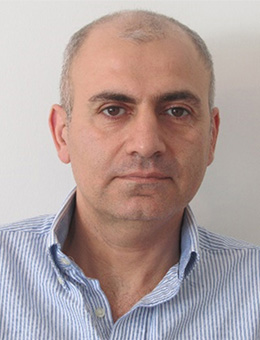
Title: Adaptive and Intelligent Sensing: The Rise of Cognitive Radars
Speaker: Prof. Joseph Tabrikian
Affiliation: Ben-Gurion University of the NegevAbstract:
The field of radar technology is undergoing a revolutionary transformation with the introduction of cognitive radars, which enhance situational awareness capabilities and adaptability in complex environments. This talk will explore the foundational concepts, technological advancements, and future prospects of cognitive radars, positioning them at the forefront of intelligent sensing systems.
Cognitive radars are characterized by their ability to sense, learn, and adapt in real-time, mimicking the cognitive functions of the human brain. Unlike traditional radar systems that operate on predefined algorithms and static parameters, cognitive radars continuously analyze their operational environment, learning from the received data to dynamically optimize the performance. This talk will detail the key components that constitute a cognitive radar system, including the perception-action cycle, adaptive waveform design or antenna selection, and feedback mechanisms.
Specifically, the talk will explore advanced concepts and innovations in cognitive multiple-input multiple-output (MIMO) radars and cognitive antenna selection. In cognitive MIMO radars, there is a tradeoff between higher angular accuracy and resolution obtained by orthogonal signal transmission, and higher beam gain and signal-to-noise ratio (SNR) obtained by coherent signal transmission. Cognitive MIMO radar adaptively designs the transmit autocorrelation matrix based on past observations. Similarly, in cognitive antenna selection, the radar system intelligently selects the optimal subset of antennas to maximize detection and localization performance.
The discussion will also cover various optimization criteria commonly used for cognitive radars, such as maximizing SNR, accuracy, and resolution. Through case studies, we will illustrate practical implementations of these concepts in defense and autonomous vehicles applications to demonstrate how cognitive MIMO radars and smart antenna selection can significantly improve radar performance in terms of detection capability, spatial accuracy and resolution, and radar coexistence.
In conclusion, cognitive radars represent a significant leap towards intelligent and autonomous sensing systems. By harnessing the power of cognitive processing and machine learning, these systems promise to revolutionize the radar technology landscape, offering unprecedented levels of adaptability and efficiency in dynamic and uncertain environments.
Biography:
Joseph Tabrikian received the B.Sc., M.Sc., and Ph.D. degrees in Electrical Engineering from the Tel-Aviv University, Tel-Aviv, Israel, in 1986, 1992, and 1997, respectively. During 1996–1998 he was with the Department of Electrical and Computer Engineering (ECE), Duke University, Durham, NC as an Assistant Research Professor. In 1998, he joined the Department of ECE, Ben-Gurion University of the Negev, Beer-Sheva, Israel, and served as the department head during 2017-2019. In May 2019 he established the school of ECE and served as its head till August 2021. He served as AE and SAE of the IEEE Signal Processing Letters during 2012-2015 and 2015-2018, respectively. He served as an Associate Editor (AE) for the IEEE Transactions on Signal Processing during 2001–2004 and 2011-2015, and is currently a Senior Area Editor (SAE) for these transactions. He is currently also a Subject Editor for the Elsevier Signal Processing journal. He was a member of the IEEE Sensor Array and Multichannel (SAM) technical committee during 2010-2015 and was the technical program co-chair of the IEEE SAM 2010 workshop. During 2015-2021 he served as a member of the Signal Processing for Multisensor Systems (SPMuS) of EURASIP and during 2017-2022 he was a member IEEE SPTM technical committee. His research interests include estimation and detection theory, learning algorithms, and radar signal processing. He is a Fellow of IEEE and AAIA. Open> -
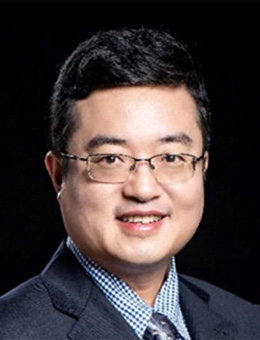
Title: Movable Antenna (MA) Aided Wireless Network: Opportunities and Challenges
Speaker: Prof. Rui Zhang
Affiliation: The Chinese University of Hong Kong, ShenzhenAbstract:
Movable antenna (MA) has been recently recognized as a promising technology for enhancing wireless system performance by exploiting wireless channel spatial variation via antenna movement at the transmitter and/or receiver. In this talk, we provide a comprehensive overview of MAs, including their historical development, practical architectures and implementation methods, contemporary applications in wireless communications and sensing (ISAC), as well as mathematical models, design issues (such as channel estimation, continuous/discrete movement optimization) and promising approaches to solve them. In particular, we present a new field-response-based channel model, which greatly facilitates the analysis, design and optimization of MA-aided wireless systems. Based on this model, various performance advantages of MAs over conventional fixed-position antennas (FPAs) are demonstrated, in terms of spatial diversity/multiplexing, interference mitigation, flexible beamforming, and wireless sensing. Furthermore, a general six-dimensional MA (6DMA) system is introduced, which consists of distributed antenna surfaces that can be independently adjusted in terms of 3D position and 3D rotation to achieve the greatest flexibility in movement. We show that by jointly designing the positions and rotations of all 6DMA surfaces equipped at the base station (BS) based on the users’ statistical channel information, the wireless network capacity can be significantly improved over the existing BS with FPAs (e.g., sector antenna arrays). Finally, we shed light on the research directions worthy of investigation in future work to unleash the full potential of MAs for wireless networks.
Biography:
Dr. Rui Zhang received the B.Eng. (first-class Hons.) and M.Eng. degrees from National University of Singapore and the Ph.D. degree from Stanford University, all in electrical engineering. He is now a Principal’s Diligence Chair Professor in School of Science and Engineering and Shenzhen Research Institute of Big Data, The Chinese University of Hong Kong, Shenzhen. He is also a Professor with the Department of Electrical and Computer Engineering, National University of Singapore. His current research interests include wireless power transfer, UAV/satellite communications, intelligent reflecting surface (IRS) and reconfigurable MIMO systems. He has published over 500 papers, which have been cited more than 90,000 times with the h-index over 135 (Google Scholar). He has been listed as a Highly Cited Researcher by Thomson Reuters / Clarivate Analytics since 2015. He was the recipient of the IEEE Communications Society Asia-Pacific Region Best Young Researcher Award in 2011, the Young Researcher Award of National University of Singapore in 2015, the Recognition Award of WTC, SPCC and TCCN Technical Committees of the IEEE Communications Society in 2020, 2021 and 2023, respectively. He received 15 IEEE Best Journal Paper Awards, including the IEEE Marconi Prize Paper Award in Wireless Communications (twice), the IEEE Communications Society Heinrich Hertz Prize Paper Award (thrice), the IEEE Communications Society Stephen O. Rice Prize, the IEEE Signal Processing Society Best Paper Award, etc. He has served as an Editor for several IEEE journals, including TWC, TCOM, JSAC, TSP, etc., and as TPC co-chair or organizing committee member for over 30 international conferences. He served as an IEEE Distinguished Lecturer of IEEE Communications Society and IEEE Signal Processing Society. He is a Fellow of IEEE and the Academy of Engineering Singapore. Open> -

Title: Model Based Deep Learning: Applications to Imaging and Communications
Speaker: Prof. Yonina Eldar
Affiliation: Weizmann Institute of ScienceAbstract:
Deep neural networks provide unprecedented performance gains in many real-world problems in signal and image processing. Despite these gains, the future development and practical deployment of deep networks are hindered by their black-box nature, i.e., a lack of interpretability and the need for very large training sets.
On the other hand, signal processing and communications have traditionally relied on classical statistical modeling techniques that utilize mathematical formulations representing the underlying physics, prior information and additional domain knowledge. Simple classical models are useful but sensitive to inaccuracies and may lead to poor performance when real systems display complex or dynamic behaviour. Here we introduce various approaches to model based learning which merge parametric models with optimization tools and classical algorithms leading to efficient, interpretable networks from reasonably sized training sets. We will consider examples of such model-based deep networks to image deblurring, image separation, super resolution in ultrasound and microscopy, efficient communication systems, and finally we will see how model-based methods can also be used for efficient diagnosis of COVID 19 using X-ray and ultrasound.
Biography:
Yonina Eldar is a Professor in the Department of Mathematics and Computer Science, Weizmann Institute of Science, Rehovot, Israel where she heads the center for Biomedical Engineering and Signal Processing and holds the Dorothy and Patrick Gorman Professorial Chair. She is also a Visiting Professor at MIT, a Visiting Scientist at the Broad Institute, and an Adjunct Professor at Duke University and was a Visiting Professor at Stanford. She is a member of the Israel Academy of Sciences and Humanities, an IEEE Fellow and a EURASIP Fellow. She received the B.Sc. degree in physics and the B.Sc. degree in electrical engineering from Tel-Aviv University, and the Ph.D. degree in electrical engineering and computer science from MIT, in 2002. She has received many awards for excellence in research and teaching, including the IEEE Signal Processing Society Technical Achievement Award (2013), the IEEE/AESS Fred Nathanson Memorial Radar Award (2014) and the IEEE Kiyo Tomiyasu Award (2016). She was a Horev Fellow of the Leaders in Science and Technology program at the Technion and an Alon Fellow. She received the Michael Bruno Memorial Award from the Rothschild Foundation, the Weizmann Prize for Exact Sciences, the Wolf Foundation Krill Prize for Excellence in Scientific Research, the Henry Taub Prize for Excellence in Research (twice), the Hershel Rich Innovation Award (three times), and the Award for Women with Distinguished Contributions. She received several best paper awards and best demo awards together with her research students and colleagues, was selected as one of the 50 most influential women in Israel, and was a member of the Israel Committee for Higher Education. She is the Editor in Chief of Foundations and Trends in Signal Processing, a member of several IEEE Technical Committees and Award Committees, and heads the Committee for Promoting Gender Fairness in Higher Education Institutions in Israel. Open> -

Title: Towards Sustainable Multi-Access and Multi-Functional Wireless Networks
Speaker: Prof. Christos Masouros
Affiliation: University College LondonAbstract:
The future Global cellular infrastructure will underpin smart city applications, urban security, infrastructure monitoring, smart mobility, among an array of emerging applications that require new network functionalities beyond communications. Key network KPIs for 6G involve Gb/s data rates, cm-level localization, μs-level latency, Tb/Joule energy efficiency. Future networks will also need to support the UN’s Sustainable Development Goals to ensure sustainability, net-zero emissions, resilience and inclusivity. The multifunctionality and the net-zero emissions agenda necessitate a redesign of the signals and waveforms for 6G and beyond. In this talk, we first explore a recent research direction involving symbol-level precoding (SLP) approaches that treat interference as a useful resource in multi-access communication systems. These have been shown to offer orders of magnitude savings in power consumption, over a range of communication scenarios. The second part of the talk focuses on enabling the multi-functionality of signals and wireless transmissions, as a means of hardware reuse and carbon footprint reduction. We overview recent research in the area of integrated sensing and communications (ISAC), that is a paradigm shift that enables a both sensing and communication functionalities from a single transmission, a single spectrum use and ultimately a common infrastructure. With the rising demand for sustainability and resilience from the network infrastructure, the above technologies are becoming essential building blocks of the wireless network.
Biography:
Christos Masouros (FIEEE, MIET) received the Diploma degree in Electrical and Computer Engineering from the University of Patras, Greece, in 2004, and MSc by research and PhD in Electrical and Electronic Engineering from the University of Manchester, UK in 2006 and 2009 respectively. In 2008 he was a research intern at Philips Research Labs, UK, working on the LTE standards. Between 2009-2010 he was a Research Associate in the University of Manchester and between 2010-2012 a Research Fellow in Queen's University Belfast. In 2012 he joined University College London as a Lecturer. He has held a Royal Academy of Engineering Research Fellowship between 2011-2016. Since 2019 he is a Full Professor of Signal Processing and Wireless Communications in the Information and Communication Engineering research group, Dept. Electrical and Electronic Engineering, and affiliated with the Institute for Communications and Connected Systems, University College London. His research interests lie in the field of wireless communications and signal processing with particular focus on Green Communications, Large Scale Antenna Systems, Integrated Sensing and Communications, interference mitigation techniques for MIMO and multicarrier communications. Between 2018-22 he was the Project Coordinator of the €4.2m EU H2020 ITN project PAINLESS, involving 12 EU partner universities and industries, towards energy-autonomous networks. Between 2024-28 he will be the Scientific Coordinator of the €2.7m EU H2020 DN project ISLANDS, involving 19 EU partner universities and industries, towards next generation vehicular networks. He is a Fellow of the IEEE, Fellow of the Artificial Intelligence Industry Alliance (AIIA) and the Asia-Pacific Artificial Intelligence Association (AAIA), and was the recipient of the 2023 IEEE ComSoc Stephen O. Rice Prize, co-recipient of the 2021 IEEE SPS Young Author Best Paper Award and the recipient of the Best Paper Awards in the IEEE GlobeCom 2015 and IEEE WCNC 2019 conferences. He is an IEEE ComSoc Distinguished lecturer 2024-2025, and his work on ISAC has been featured in the World Economic Forum’s report on the top 10 emerging technologies. He has been recognised as an Exemplary Editor for the IEEE Communications Letters, and as an Exemplary Reviewer for the IEEE Transactions on Communications. He is an Area Editor for IEEE Transactions on Wireless Communications, Editor for the IEEE Open Journal of Signal Processing, and Editor-at-Large for IEEE Open Journal of the Communications Society. He has been an Editor for IEEE Transactions on Communications, IEEE Communications Letters, and a Guest Editor for a number of IEEE Journal on Selected Topics in Signal Processing and IEEE Journal on Selected Areas in Communications issues. He is a founding member and Vice-Chair of the IEEE Emerging Technology Initiative on Integrated Sensing and Communications (SAC), Vice Chair of the IEEE Wireless Communications Technical Committee Special Interest Group on ISAC, and Chair of the IEEE Green Communications & Computing Technical Committee, Special Interest Group on Green ISAC. He is a member of the IEEE Standards Association Working Group on ISAC performance metrics, and a founding member of the ETSI ISG on ISAC. He is the TPC chair for the IEEE ICC 2024 Selected Areas in Communications (SAC) Track on ISAC, Chair of the IEEE PIMRC2024 Track 1 on PHY and Fundamentals, Chair of the "Integrated Imaging and Communications" stream in IEEE CISA 2024, and TPC Co-Chair of IEEE VTC 2025. Open> -
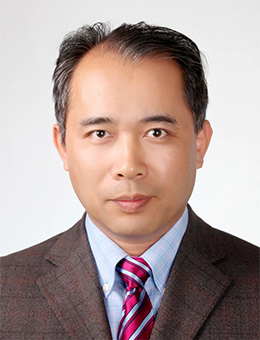
Title: Full-sensing Holographic Immersive Communications
Speaker: Prof. Xiaofeng Tao
Affiliation: Beijing University of Posts and Telecommunications, and Pengcheng LaboratoryAbstract:
This part should be longer than 300 words.
As the ITU-R recommendation for the future development of IMT 2030 and beyond, the immersive communication extended from the enhanced Mobile Broadband (eMBB) is one of the six major scenarios of the sixth-generation technology for wireless communications (6G), which includes communication for immersive XR, remote multi-sensory telepresence, and holographic communications. The talk first introduces the theoretical foundation and technical requirements of immersive communications for the typical use cases . We then analyze the state of the art and technical challenges in supporting full-sensing holographic immersive communications, including ultra-high-speed wireless transmission over terahertz frequency band and heterogeneous wireless networking of various multi-user access scenarios, and multi-sensorial content capture and reconstruction with high reliability in a time-synchronized manner. Finally, we summarize the research progress in full-sensing holographic immersive communications.
Biography:
Xiaofeng Tao is a Professor with Beijing University of Posts and Telecommunications (BUPT) and Pengcheng Laboratory,China, and the Chairman of the IEEE ComSoc Beijing Chapter. His research interests are focused on 5G/6G technologies and he has authored or coauthored over 300 research papers and three books in wireless communications. Open> -

Title: Novel Energy Conversion Nanocomposites for Electronic Information System
Speaker: Prof. Yihe Zhang
Affiliation: China University of Geosciences, Beijing, ChinaBeijing Institute of Technology, Zhuhai, Greater Bay Area Innovation Research InstituteAbstract:
This presentation explores the development of novel nanocomposites for energy conversion and storage for electronic information systems. It focus on the development and applications of nanocomposites that combine graphene with other 2D materials, polymers and inorganic components to improve energy storage and conversion efficiency. The presentation begins with the fabrication of graphene/polymer nano energy films for sensor applications, demonstrating high dielectric constants and low dielectric losses. These films are further utilized in flexible piezoelectric generators and capacitors, showcasing their versatility environmental sensing capabilities. The presentation extends to graphene/inorganic nanocomposites for energy storage, focus on graphene/hydroxide supercapacitors with remarkable capacitance retention and energy density, along with graphene/MoS2 composites for efficient hydrogen production. Photocatalytic nanocomposites for energy conversion are another significant focus, the presentation also covers the development of photocatalysts and properties, exploring the generation of reactive oxygen species in photocatalytic mechanisms. Lastly, the presentation delves into Mg based batteries nanocomposites for electronic information system, positioning Mg-ion batteries as a frontrunner for next-generation energy storage systems. The advantages of magnesium ion batteries in terms of mass capacity, volume capacity and safety make them a promising alternative. In conclusion, this report presents a comprehensive view of the role of nanocomposites in advancing energy technologies, with potential applications in electronic information systems.
Biography:
Prof. Yihe Zhang is a professor of the school of materials science and technology of China University of Geosciences (Beijing). He obtained his Bachelor in Organic Chemical Engineering and Master degree in Material Engineering in 1986 and 2001 respectively, and gained his Ph.D. in Physical Chemistry from Chinese Academy of Sciences. He as a postdoctoral fellow from the Hong Kong Polytechnic University. He has successively served as professor, Dean, School of Materials Science and Technology, China University of Geosciences (Beijing), Chief Scientist of Resource Comprehensive Utilization and New Materials Innovation Team, Director of Beijing Key Laboratory of Material Utilization of Non-metallic Minerals and Solid Waste Resources, director of National Recycling Economy Engineering Laboratory, Deputy director of Mining Area Ecological Restoration Engineering Technology Innovation Center of Ministry of Natural Resources; Research Fellow in Hong Kong Polytechnic University and City University of Hong Kong. He has been also as visiting professor in Australia, United States of America, Germany, the Netherlands, and Canada. He has been elected as Foreign Member (Academician) of Russian Academy of Engineering (2019), Foreign Full Member of Russian Academy of Natural Sciences (2022), Fellow of Chinese Society of Micron-Nano Technology.
He serve as the Chairman of the Special Committee of Mineral Composite Materials of China Composite Materials Society, Deputy director of Solid Waste Branch of Chinese Society of Environmental Science, director of the Chinese Society of Materials Research, director of the Chinese Society of Micro and Nano Technology, director of the China Mineral Resources and Materials Application Alliance, Deputy director of the Salt Lake Environmental Resources Special Committee of the Geological Society of China.
Adhere to the world's scientific and technological frontier of materials, he has long-term engaged the research and development in the "mineral composite materials and their application of environment, new energy and biomaterials". He has published more than 680 peer review international journal papers (citations more than 28000 times, H index 88), selected as "Highly Cited Researcher" by Clarivate since 2019, and the top 2% of the world's top scientists by Stanford University since 2019 to now. He has published 10 monographs as the chief author, and authorized over 100 inventive patents, some patents had been Technology transferred. He has won many science and technology awards. He always serves as a reviewer for many international journals. Open>
